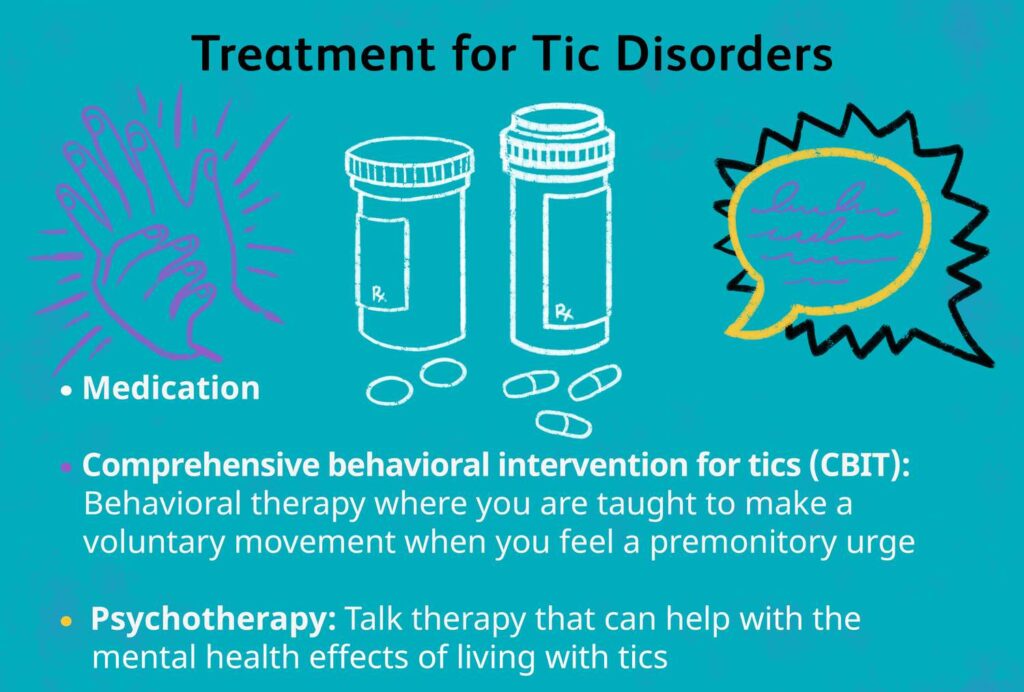Latest Advancements in TICS Treatment

Latest Advancements in TICS Treatment
Tics, sudden, repetitive movements or sounds that some individuals make are common symptoms of various neurological disorders, including Tourette Syndrome. Understanding and treating tics has come a long way, with recent advancements offering hope to those affected. This article explores the latest advancements in tics treatment, exploring new therapies, medications, and approaches.
Understanding Tics
Before diving into the treatments, it’s crucial to understand what tics are. Tics are classified into two types:
● Motor Tics: These involve sudden, brief, repetitive movements like blinking, head jerking, or shoulder shrugging.
● Vocal Tics: These include repetitive sounds such as throat clearing, sniffing, or grunting.
Causes of Tics
Various factors, including genetics, neurochemical imbalances, and environmental influences, can cause tics. They are often associated with Tourette’s Syndrome but can also occur independently or in conjunction with other conditions.
Traditional Approaches to Tics Treatment
Historically, tics treatment has included behavioural therapies, medications, and, in severe cases, surgical interventions. While effective for some, these methods have their limitations and side effects.
- Behavioural Therapies
Behavioural therapies such as Comprehensive Behavioural Intervention for Tics (CBIT) have been widely used. CBIT teaches individuals to recognise the urge to tic and engage in competing responses.
- Medications
Medications like antipsychotics and neuroleptics have been used to manage tics. However, these drugs often come with side effects such as weight gain, sedation, and cognitive dulling.
- Latest Advancements in TICS Treatment
Significant progress has been made in treatment in recent years, offering new hope for those affected. These advancements include innovative therapies, novel medications, and cutting-edge technology.
- Deep Brain Stimulation (DBS)
One of the most promising advancements in tics treatment is Deep Brain Stimulation (DBS). DBS involves implanting electrodes in specific brain areas to modulate neural activity. This treatment has shown remarkable results in reducing severe tics in patients who do not respond to conventional therapies.
How DBS Works: Electrodes are implanted in the brain and connected to a pulse generator implanted in the chest. The generator sends electrical impulses to the brain, helping to control tics.
DBS Benefits
It includes a significant reduction in tics, improved quality of life, and the ability to adjust stimulation settings to optimise results.
Transcranial Magnetic Stimulation (TMS)
Transcranial Magnetic Stimulation (TMS) is another innovative approach showing promise. TMS uses magnetic fields to stimulate nerve cells in the brain, potentially reducing tics.
● How TMS Works: A coil is placed near the scalp, generating magnetic pulses that stimulate specific brain regions.
● Benefits of TMS: It is noninvasive, has fewer side effects than medications, and can be used as an adjunct to other treatments.
Pharmacological Advances
New medications targeting the underlying neurochemical pathways of tics are under development. These drugs aim to offer effective tics treatment with fewer side effects.
●VMAT2 Inhibitors: Vesicular monoamine transporter 2 (VMAT2) inhibitors like tetrabenazine and deutetrabenazine promise to reduce tics by modulating dopamine levels.
● Cannabinoids: Emerging research suggests that certain cannabinoids may help manage tics, providing an alternative for patients who do not respond well to traditional medications.
Genetic Therapies
Advances in genetic research have opened new avenues for tics treatment. Understanding the genetic basis of tics can lead to targeted therapies that address the root cause.
●Gene Therapy: Techniques to correct genetic mutations associated with tics are being explored, offering the potential for a long-term solution.
● CRISPR Technology: CRISPR, a gene-editing tool, holds promise for precisely targeting and modifying genes responsible for tics.
Behavioural and Psychological Interventions
Innovative behavioural therapies continue to evolve, providing practical strategies for managing tics.
●Acceptance and Commitment Therapy (ACT): ACT helps individuals accept their tics and commit to actions that improve their quality of life, reducing the impact of tics on daily functioning.
●Mindfulness-Based Interventions: Mindfulness practices have shown the potential to reduce tic severity by helping individuals manage stress and improve self-awareness.
Digital Therapeutics
The rise of digital health technologies has brought new tools for tics treatment.
●Mobile Apps and Wearables: Apps and wearable devices can help track tics, provide reminders for behavioural interventions, and offer real-time support.
●Virtual Reality (VR) Therapy: VR environments are being used to deliver behavioural therapies, making treatment more engaging and accessible.
The current scenario of tics treatment is rapidly evolving, with advancements offering new hope for individuals affected by tics. The upcoming developments in tics management looks promising, from advanced technologies like DBS and TMS to novel medications and genetic therapies. Continued research and innovation are essential to develop even more effective treatments, improving the lives of those living with tics.
As we continue to explore these advancements, it is crucial to adopt a multidisciplinary approach, combining medical, psychological, and technological interventions for comprehensive care. By staying informed about the latest developments, patients and healthcare providers can make informed decisions and optimise treatment outcomes.
These advancements highlight the potential for improved tics treatment, which could provide hope and enhance the quality of life for those affected.





